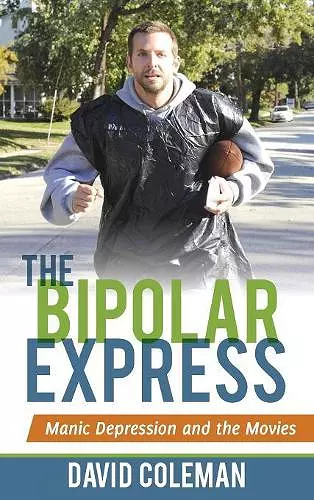The Bipolar Express
Manic Depression and the Movies
Format:Hardback
Publisher:Rowman & Littlefield
Published:8th Jul '14
Currently unavailable, and unfortunately no date known when it will be back

In the past few decades, awareness of bipolar disorder has significantly increased, but understanding of the condition remains vague for most of the general public. Though the term itself is relatively recent, the condition has affected individuals for centuries—and no more profoundly than in the arts. The historical connections among manic depression and such fields as literature, music, and painting have been previously documented. However, the impact of bipolar disorder on movie makers and its depiction on the screen has yet to be thoroughly examined. In The Bipolar Express: Manic Depression and the Movies, David Coleman provides an in-depth examination of the entwined natures of mood disorders and moviemaking. In this volume, Coleman looks at the writers, directors, and actors who have faced the mood swings and behavior that are hallmarks of this condition—from Greta Garbo and Orson Welles to Marilyn Monroe and Jonathan Winters. In addition to recognizing the cinematic contributions of manic depressive filmmakers, the author also looks at movies that have portrayed bipolar disorder—with varying degrees of accuracy—including Citizen Kane, Rebel without a Cause, Breakfast at Tiffany’s, Hannah and Her Sisters, The Aviator, and Silver Linings Playbook. From early silents of the twentieth century through critically acclaimed films of today, this book compares depictions of mood swings on screen with clinical examples of actual manic depression, carefully distinguishing real from stereotypical portrayals. This fascinating study is augmented by a concise filmography of more than 400 feature-length films from around the world with themes or characters relating to manic depressive illness. Though aimed at film fans and anyone interested in manic depression, mental illness, or related medical studies, this book will also prove valuable to medical and mental health professionals.
Awareness of bipolar disorder has increased in recent years, but misunderstanding and stereotypical representations remain. Coleman provides an insightful examination of the depiction of bipolar disorder in cinema and of how it has impacted filmmaking itself. Covering cinematic creation from its very beginnings to the 2000s, the author posits that the combination of cinematic talent and behaviors associated with mood disorders can result in visionary cinema production. The author starts with a brief overview of bipolar disorder and its relation to creativity and speculates that US cinematic invention can be a by-product of bipolar disorder. He goes on to look at how bipolar disorder has been depicted in film over the decades and concludes with the current depiction of the reality of mental illness. Coleman analyzes writers, directors, and actors who have displayed behaviors symptomatic of bipolar disorder, supporting his argument that mood disorders can be a component in the creation of quixotic cinema. A thought-provoking, though quirky, read for students of film, mental health professionals, and those interested in creativity and mental health in general. Summing Up: Recommended. With reservations. Upper-division undergraduates through faculty; general readers. * CHOICE *
ISBN: 9780810891937
Dimensions: 236mm x 161mm x 30mm
Weight: 671g
382 pages